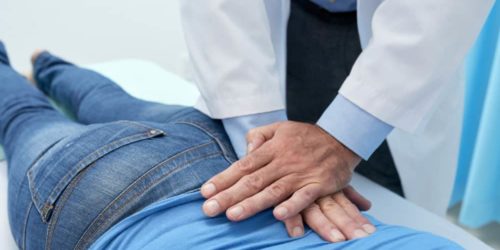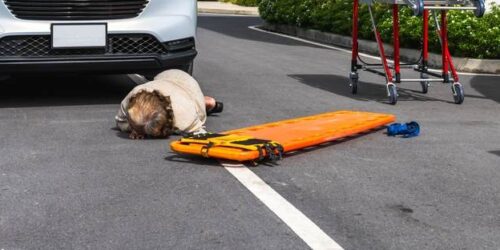A traumatic event like a car accident can have a lasting impact on your health, both physical and mental. Even if you did not sustain any serious injuries, the force of a collision is not natural and can put the body in a misaligned state, causing soreness and stiffness. This may involve working with chiropractors and other medical professionals to address your injuries, but there are also ways to manage pain at home. With the approval of your providers, certain exercises can boost healing in the body and ensure you don’t suffer any long-term consequences of your accident.
Exercises for Neck and Back Pain
After a car accident, most injuries and pain symptoms occur in the neck and back. This is especially true in minor accidents where you have not suffered a traumatic brain injury or severe internal damage. If you find yourself with no serious conditions but general back and neck pain, these exercises will be good options to help you manage the pain.
Bird Dog
Start in a tabletop position on your hands and knees, ensuring your wrists are right under your shoulders and your knees are directly above your hips. Once you are steady, extend your right arm forward and your left leg backward. Be sure to keep your back flat and your hips in line with the floor.
Drive your foot toward the wall behind you and squeeze your abs as tightly as you can, holding for 30 seconds. Return to the starting position and repeat on the other side.
Seated Neck Release
For pain in the sides of the neck, this can be helpful. You’ll start by sitting on the floor with your legs crossed or in a chair with your feet flat on the ground. Extend your right arm to your right knee or along the right side of the chair. Then place your left hand atop of your head, slowly moving your head to the left. If you want to deepen the stretch, gently apply pressure with your hand. Hold for 30 seconds before slowly returning to the center, then repeating on the opposite side.
For an even deeper stretch, hold onto your right knee or the side of the chair to stabilize your torso and isolate the stretch on the side of your neck.
Seated Clasping Neck Stretch
Sitting on the floor or in a chair, clasp your hands together with your fingers interlaced. Bring your palms to the back of your head, ensuring your spine is tall. Ground your hips firmly into your seat.
Gently press your hands down toward your thighs, allowing your chin to tuck into your chest. Use the heels of your palms to pull your head away from your shoulders to intensify the stretch. Hold for at least 30 seconds before releasing your hands and returning to an upright position.
Tabletop Leg Press
Lie flat on your back on a supportive surface, then raise your legs and bend your knees at a 90-degree angle. Be sure your knees are directly over your hips. Once stable, press your lower back into the ground and contract your abs. If possible, crunch up a few inches and rest your hands on the front of your thighs.
Drive your hands into your quads, using your hands for additional pressure. Your body shouldn’t move, but you will feel the tension in your legs. Hold for 30 seconds.
Behind the Back Neck Stretch
Stand up straight, keeping your feet hip-distance apart and your arms at your sides. Reach both hands behind your glutes, grabbing your left wrist with your right hand. Gently straighten the left arm using your right hand, pulling it away slightly. To intensify the stretch, lower your right ear toward your shoulder. Hold for 30 seconds, then repeat on the other side.
Glute Bridge
Lie on your back with your feet flat on the floor, hip-width apart, and knees bent. Your hands can be at your sides. Squeeze your abs and glutes, pushing through your heels to lift your hips off the ground. Lift until your body forms a straight line from your shoulders to your knees. Hold this position as long as you can before lowering to the starting position.
Dead Bug
Lie on your back, extending your arms toward the ceiling, with your legs in a tabletop position. Slowly extend your right leg to be straight, dropping your left arm overhead at the same time. Keep both the arm and leg a few inches off the ground.
Squeeze your glutes, keeping your core engaged the entire time, and press your lower back to the floor. Hold as long as you can before returning to starting position and repeating on the other side.
Seated Heart Opener
Sit on the floor with your feet under you so that your legs touch all the way through your feet. Lean back, placing your palms flat on the floor, about eight inches behind you, fingers pointing away. Press your palms firmly into the ground, lifting your chest and arching your back. You should feel your hips push into your heels. To deepen the stretch, lower your head behind you, stretching your throat and chest further. Hold for 30 seconds before lifting your head and torso.
Other Rehabilitative Exercises
In addition to simple movements and stretches you can perform at home, a physical therapist may suggest you use certain tools and practices to help with your healing. Movement can increase blood flow and help you regain strength, flexibility, and range of motion that may be otherwise lost in the aftermath of an accident. Some common exercises and practices are below.
Massage and Foam Rolling
If muscle tension and knots are causing you pain, massage is a great way to relax the muscles while also increasing blood flow and reducing inflammation. This can help soreness and stiffness go down while allowing the injury to heal quickly. If you can’t get a massage or reach the area yourself, a foam roller is a great way to mimic the pressure of a deep tissue massage and pinpoint it to one area.
Stretching
In addition to more targeted stretches as a part of exercise routines, very basic stretching can be helpful. However, it’s important to wait 72 hours after a car accident before doing any stretching to avoid further damage to certain tissues. You can do small stretches throughout the day without needing any formal routine- simply move your body in ways that feel right.
Walking
Provided you don’t have any injuries that would prevent you from walking, like a broken ankle or hip, light walking can be a great way to keep the body moving in the aftermath of an accident. Rest can be helpful early on, but movement is actually critical to helping the body heal and return to its former state. You don’t need to jog or push yourself beyond your normal activity, but something as simple as a walk around the block can improve your circulation and speed up recovery.
When Exercises Aren’t Enough
While many of these activities can be done simply at home, you should always consult with the appropriate medical professional before attempting them. Often they will recommend these and similar exercises as a part of a larger treatment plan, such as physical therapy and ongoing chiropractic care. In combination with proper maintenance and movement, a treatment plan can help ensure you are not just reducing pain and stiffness, but also addressing the root cause and your underlying injuries.
If you have been in an accident and are seeking guidance on the next steps, Contact Procare today.




